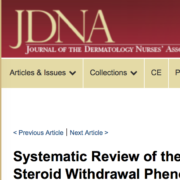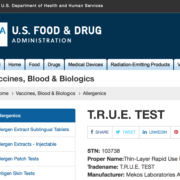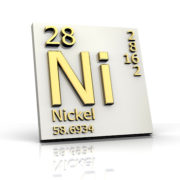Unmask the facts- the truth behind “fragrance free”
Original Article:
Scheinman PL. Exposing covert fragrance chemicals. Am J Contact Dermat. 2001;12(4):225‐228. doi:10.1053/ajcd.2001.28697
Reviewed by Jalal Maghfour and Dr. Alina Goldenberg
Fragrances are widely used in personal care products, cosmetics, medicaments, and foods within the US. Fragrances are responsible for many cases of allergic contact dermatitis, leading it to be perceived as a significant public health problem.
We aim to provide an overview of fragrance chemicals and how knowledge of fragrance elements can shape patient outcomes.
Patch testing continues to be the gold standard for the diagnosis of fragrance sensitization. Patch test commonly include fragrance mix (FM) and balsam of Peru. FM, which includes cinnamic aldehyde, cinnamic alcohol, eugenol, isoeugenol, hydroxycitronellal geraniol, oak moss absolute, and alpha-amyl cinnamic aldehyde, is highly ubiquitous worldwide with an estimated sensitization prevalence of 11%.
While patch testing can detect 70 to 80% of fragrance elements, false negative reactions to FM may occur. Hence, it is important to conduct an expanded series of fragrance chemicals if the suspicion for an allergy is high. This is of clinical importance since identification of the exact etiology may guide disease management and empowers patients to take control over their own health.
Although being aware of fragrance allergy is important, many products that are labeled as “fragrance-free” are not truly free of chemical fragrance. For instance, benzyl alcohol is often used as a preservative but it is also considered a fragrance agent. However, because benzyl alcohol has a dual function, companies can legally label a product as “fragrance-free”. This makes it challenging for sensitized patients to avoid certain “fragrance-free” products. Hence, knowledge of various products by clinicians can be vital for patient care. Historically, plant and animal ingredients were the main extracts used in making fragrance. It is therefore important to note that a patient who is allergic to a fragrance agent in a product may also react to the same ingredient found in plants and flowers.
Sensitization to an allergen is necessary for elicitation to occur in which the rash of ACD is present. Initial sensitization usually requires a higher dose of the chemical allergen. However, if a fragrance is applied to skin areas with high absorption capacity such as face, genitals, and traumatized areas (shaving, post-surgical sites, excoriated lesions of atopic dermatitis/eczema), a lower dose is may be necessary to sensitize an individual. It is noteworthy that for sensitized individuals subsequent exposure of a lower dose of the allergen may be enough to elicit a cutaneous eruption. Hence, in addition to removing fragrances from commonly used products, public policy should also focus on reducing the levels of fragrance use to prevent reactions in sensitized individuals.







